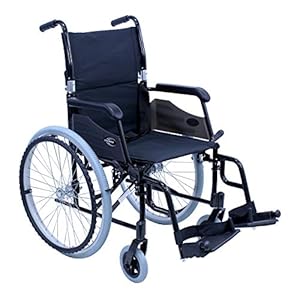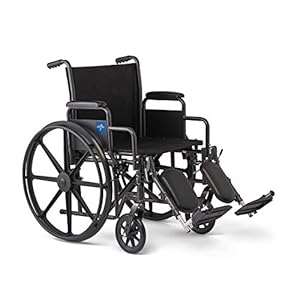
Sufferers with a dysfunctional aortic coronary heart valve who obtained a brand new, prosthetic valve by means of a minimally invasive process had comparable outcomes at 5 years as those that underwent open-heart surgical procedure, a brand new research reveals.
The worldwide multicenter research, with key contributions by the Cedars-Sinai coronary heart workforce and printed in The New England Journal of Medicine, presents a extra full image to the continuing dialogue evaluating the minimally invasive coronary heart process–referred to as transcatheter aortic valve substitute, or TAVR–to open-heart surgical procedure.
“Our knowledge at 5 years validate that TAVR is an efficient different to open-heart surgical procedure in youthful sufferers with aortic stenosis,” stated Raj Makkar, MD, Cedars-Sinai’s vice chairman of Cardiovascular Innovation and Intervention, affiliate director of the Smidt Coronary heart Institute and the research’s senior writer. “They help routinely providing TAVR, even to sufferers for whom open-heart surgical procedure wouldn’t pose a excessive threat.”
The aortic valve is considered one of 4 valves within the coronary heart that open and shut to make sure correct blood stream. Aortic stenosis happens when narrowing within the aortic artery prevents the valve from totally opening, and this impedes the motion of blood by means of the guts and to the remainder of the physique.
Transcatheter aortic valve substitute was authorized by the U.S. Meals and Drug Administration in 2011 for folks with extreme aortic stenosis who’re at excessive threat for experiencing surgical problems. At present, minimally invasive procedures are more and more provided to sufferers as a substitute for surgical procedure.
“These findings help the method of the Smidt Coronary heart Institute: We individualize remedy to greatest handle the affected person’s wants,” stated Eduardo Marbán, MD, PhD, government director of the Smidt Coronary heart Institute. “We provide every affected person a complete analysis of their remedy choices, which embody surgical procedure and transcatheter procedures like TAVR.”
This medical trial, referred to as PARTNER 3, recruited sufferers from a number of well being establishments within the U.S., Australia, Canada, Japan and New Zealand. Investigators randomized 1,000 folks with extreme, symptomatic aortic stenosis to endure TAVR or surgical procedure. In the end, 496 folks underwent TAVR and 454 underwent surgical procedure.
The sufferers have been all thought-about to be at low threat for surgical problems. Investigators assessed the sufferers earlier than the process or surgical procedure, within the days following the process or surgical procedure, at hospital discharge, 30 days later, six months later and yearly for 5 years.
Charges of loss of life, stroke, and rehospitalization 5 years post-treatment have been comparable between sufferers assigned to TAVR and people assigned to surgical procedure. Loss of life, stroke, or rehospitalization associated to the brand new valve placement, process, or coronary heart failure occurred in 111 of 496 sufferers within the TAVR group and 117 of 454 sufferers within the surgical procedure group.
The findings echo these of different medical trials that in contrast individuals who underwent TAVR versus surgical procedure at one-, two-, and three-year intervals post-treatment.
“The selection of TAVR versus surgical procedure ought to be tailor-made to every affected person based mostly on anatomy, which can have an effect on the success of the primary process and likewise the feasibility of a repeat TAVR process a number of years later, when the primary valve has degenerated,” stated Makkar, who can also be the Stephen R. Corday, MD, Chair in Interventional Cardiology at Cedars-Sinai.
Different investigators who labored on the research embody Michael J. Mack, MD; Martin B. Leon, MD; Vinod H. Thourani, MD; Philippe Pibarot, DVM, PhD; Rebecca T. Hahn, MD; Philippe Genereux, MD; S.H. Kodali, MD; Samir R. Kapadia, MD; D.J. Cohen, MD, MSc; Stuart J. Pocock, PhD; Michael Lu, PhD; Roseann White, PhD; Molly Szerlip, MD; Julien Ternacle, MD; S. Chris Malaisrie, MD; Howard C. Herrmann, MD; Wilson Y. Szeto, MD; Mark J. Russo, MD; Vasilis Babaliaros, MD; Craig R. Smith, MD; Philipp Blanke, MD; and John G. Webb, MD.
Investigators will comply with the sufferers enrolled on this research for 10 years to doc the sturdiness of the prosthetic valves.
Funding: The research was funded by Edwards Lifesciences.
Trending Merchandise










![[2025 Upgrade] Aotedor 30 Miles Long Travel Range, Electric Wheelchair for Adults Power Wheelchairs Lightweight Foldable All Terrain Motorized Wheelchair for Seniors Compact Portable Airline Approved](https://m.media-amazon.com/images/I/51vZJPDMrOL._SS300_.jpg)

888starz bangladesh download http://www.888starz-official.com/ .